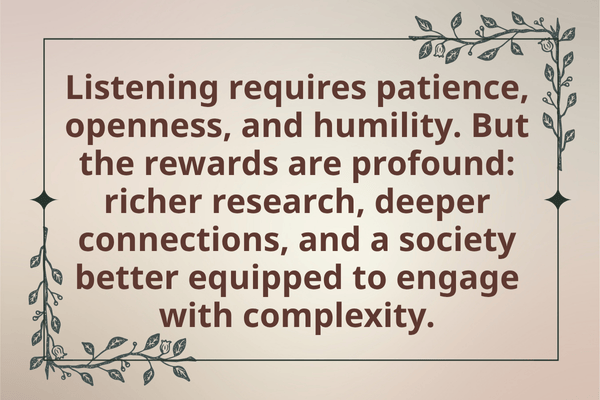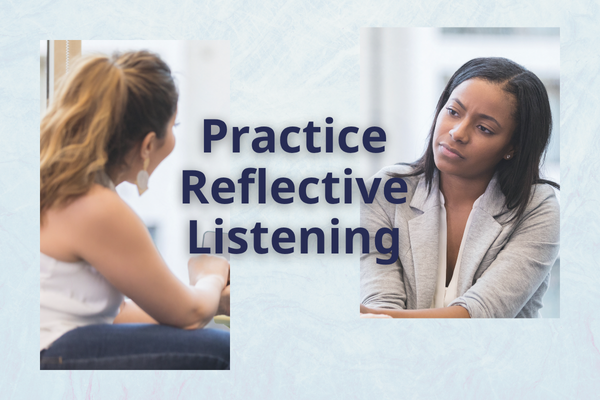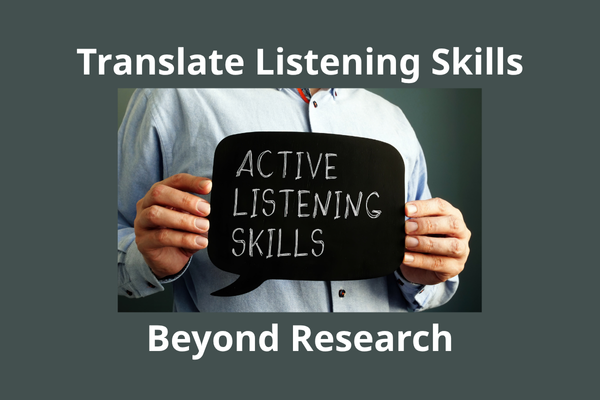There are no items in your cart
Add More
Add More
| Item Details | Price | ||
|---|---|---|---|
Fri Oct 31, 2025

In our last post, we explored why listening is more than just hearing words; it’s about engaging deeply with stories, experiences, and meanings. This kind of listening is essential for qualitative researchers and, frankly, for anyone who wants to build understanding in today’s polarized world. But what does it actually look like in practice? How do we train ourselves, and our students, to listen in ways that are curious, empathetic, and constructive?
Here are some strategies to guide you:

1. Listen to Understand, Not to Respond
It’s tempting to start forming your answer while someone is speaking. Qualitative researchers resist this urge. Instead:
Tip: Keep a mental or written note of questions that arise, then return to them later without interrupting the speaker.

2. Lean Into Complexity
People’s experiences are rarely simple. Avoid reducing their stories to categories prematurely. Instead:
Tip: Use prompts like, “Can you tell me more about how that felt?” or “What influenced that decision for you?”

3. Practice Reflective Listening
Reflective listening ensures you are accurately hearing and interpreting the speaker:
Tip: Simple phrases like, “It sounds like you’re saying…” or “I hear that you felt…” validate the speaker and deepen understanding.

4. Be Mindful of Nonverbal Cues
Listening is not just about words. Body language, tone, and pauses provide crucial information:
Tip: Avoid filling every pause with a question; sometimes listening means giving space.

5. Suspend Judgment and Embrace Curiosity Over Criticism
Effective qualitative listening requires genuine curiosity: · Avoid evaluating or interpreting too quickly.
Tip: Before responding, ask yourself: “Am I trying to understand this person’s experience, or am I preparing my counterpoint?”

6. Document Thoughtfully
Recording or taking notes helps capture nuances and patterns without replacing active listening:
Tip: Consider using memos or reflections after interviews to capture your own listening experience.

7. Translate Listening Skills Beyond Research
The habits you cultivate as a qualitative researcher are life skills too:
Final Thought:
Listening like a qualitative researcher is a discipline. It requires patience, openness, and humility. But the rewards are profound: richer research, deeper connections, and a society better equipped to engage with complexity. Whether in research or in life, learning to listen in this way can help us bridge divides, uncover insights, and foster empathy.